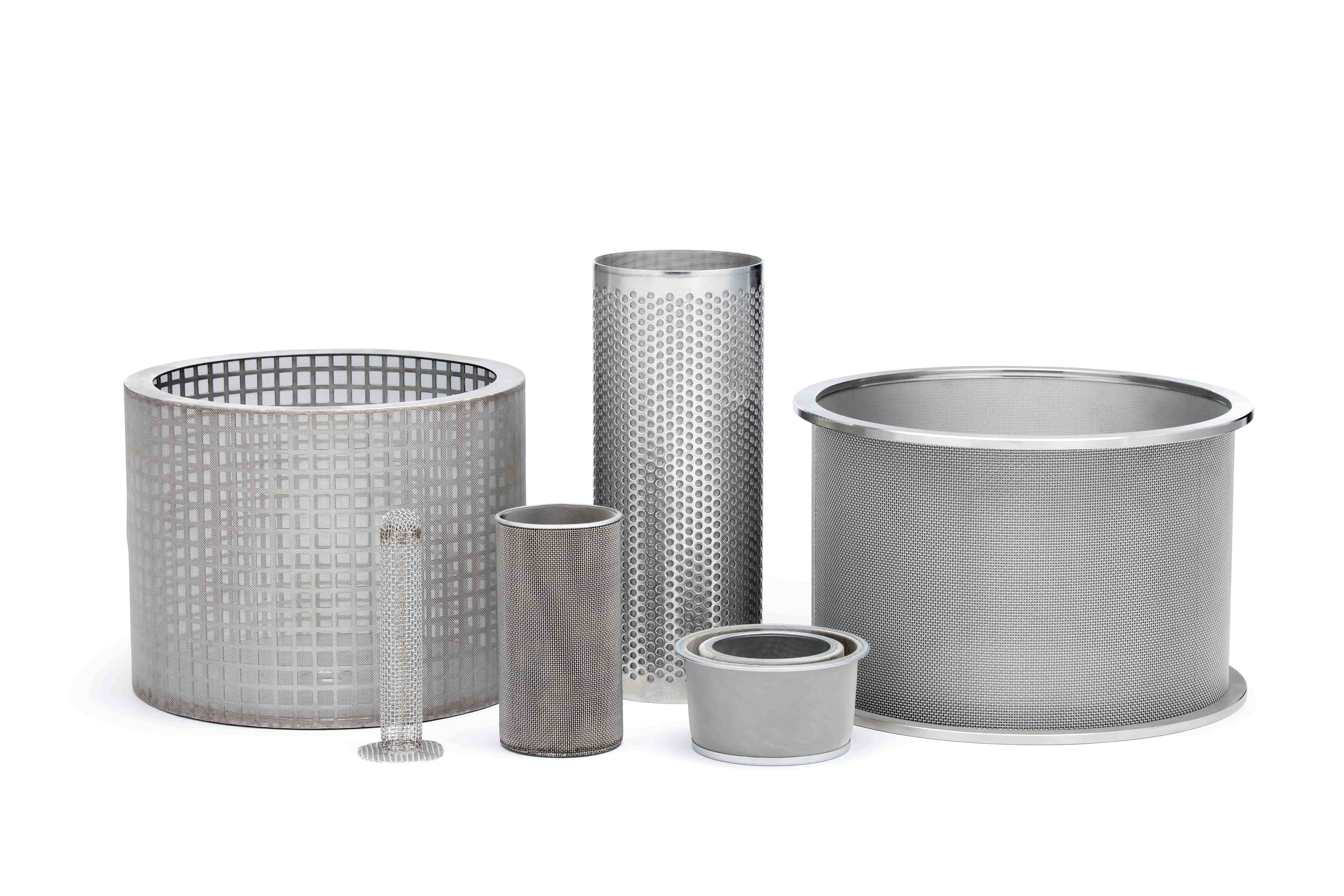Wire Mesh Filters: What You Need To Know Before You Buy
Woven wire mesh is arguably one of the most versatile materials in the world, as it can be formed to accommodate almost any filtration or design application. With other materials, such as wedge wire, on the market, woven wire mesh stands out as it balances performance with cost-savings.
But as no one operation is the same, buying customized wire mesh screens and filters proves to be ideal in most cases. With that, it is important that you know what to expect when building a customized wire mesh part so optimal results are achieved.
Having gained over 150 years of woven wire mesh experience, W.S. Tyler is here to ensure you put the ideal solution for your process in place.
That said, this article will help you better understand:
- What the buying process looks like for customized mesh
- Important quoting information
- What is needed to build the best possible solution
Building the Perfect Mesh Specification
There are several specifications that must be methodically determined while designing the ideal custom mesh screen/filter. Of these specifications layer configuration, size and shape, and mesh count can be the hardest to determine.
Single- vs. Multi-Layer
There are several reasons why a multilayer configuration would be best for your operation. Of these reasons, the biggest deciding factor would be the need for strength and durability.
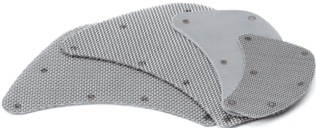
Let’s say you are filtering a substance or screening a material that has various particle sizes. If you were to simply use a single layer of fine mesh, odds are it wouldn't hold up as the larger particles would compromise the integrity of the mesh in a short period of time.
To combat this, you would take the fine mesh needed to deliver the filtering capabilities and sandwich it between layers of stronger, more coarse mesh. Doing so will prevent the larger particles from damaging the finer filter layer.
That said, if you are filtering non-abrasive material or seeking to obtain the filter cake, a single-layer configuration will best suit your needs.
Size and Shape
When working with woven wire mesh, in particular, the sky's the limit when it comes to the ways it can be formed to accommodate your operation. That said, there are a few aspects to the forming process that simply can’t be done.
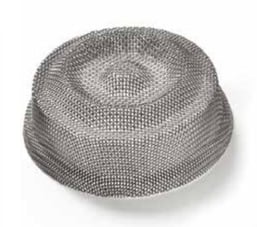
When forming deep drawn funnel screens for low-pressure die casting, for example, there is a ratio, based on the screen’s diameter, that limits the depth in which the screen can be drawn. This ratio essentially limits the depth measurement from exceeding the measurement of the diameter of the screen.
Putting this into perspective, if you require a screen that is one inch in diameter, it would be impossible to draw the part out to a measurement of 5 inches.
Mesh Opening Size
The mesh opening size that best suits your operation ultimately depends on the particles you are working with.
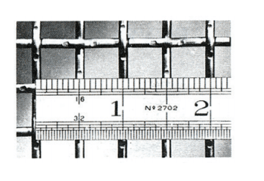
If you are screening large pieces of aggregate you will want to use larger mesh openings as they will allow the large particles to pass while also accommodating the wire diameter needed to create a durable screen. On the other hand, if you are filtering out sand from raw oil, a finer mesh count will be needed as these particles can prove to be small.
With that, the mesh count of the screen may be limited based on the type of woven wire cloth. Square mesh has a mesh count range of 4 mesh down to 230 mesh whereas filter cloth has a mesh count range of 4 microns to 302 microns.
To learn more about how mesh count and micron rating compare, read the following article:
Important Information for Wire Mesh Inquiries
When trying to identify the wire mesh needs of a customer, there is a “Good, Better, Best” scale that is used. With that, there are three primary mesh elements that dictate how effective the mesh supplier is at helping you establish the perfect mesh solution:
- Wire Diameter: Refers to the width of the wires in the mesh
- Opening Size: Refers to the space in between the wires in the mesh
- Mesh Count: Refers to the number of wires in the mesh
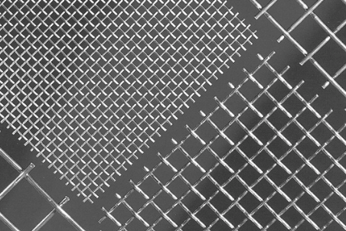
If you provide one of these elements, you are representing the good category of the scale. If two elements are provided, that would be better. And, naturally, if someone has all three, that is best.
As an example, let’s say the mesh supplier receives the following email: “Sam, can I get pricing on 200 feet of 50-micron cloth?”
As you can see, this email is only referring to the opening size. With this information, a recommendation can be given, however, the exact needs of the inquirer are still unknown.
Now, if the email included the following information: “60x60 Mesh with .0075” Wire”, the supplier would be able to tell the exact mesh count as well as the wire diameter.
With these two elements, the opening size can then be determined. That said, any two elements can help determine what the third will be.
Of course, providing all three elements will yield the best results.
What Does the Buying Process Look Like?
Regardless of the needs of your wire mesh part, the buying process starts with reaching out to the mesh supplier with an overview of the mesh to see if it can be produced. Typically, you will be asked to submit some sort of drawing or blueprint with the mesh specifications so an engineer can review them.
Read the article below for an in-depth breakdown of what you should expect when submitting a wire mesh drawing:
If neither a blueprint or drawing is available, our team of experts can work with you to determine which specifications will work best for your needs.
Once the engineer confirms that the desired mesh specification can be produced, you will receive a quote reflecting the cost of the materials needed to produce the mesh. With that, it is important that you know the different elements of the desired mesh specification.
This includes:
- The mesh count
- The alloy of the mesh
- Any sort of heat treatment needed
- Any value-added services needed
Once you receive the quote, the final step would be to accept it and submit a purchase order. Taking all this into consideration, the biggest obstacle you will face during the buying process is if the mesh can be produced.
Gain Virtual Insight Into How Your Woven Wire Mesh Solution Will Perform
Customized wire mesh solutions provide a level of performance and cost-savings that is not seen in any other material. From filtering out damaging contaminants to extracting a filter cake, the uses of custom wire mesh are virtually limitless.
Regardless of the application, the buying process will always begin with reaching out to our team of experts. But before you make the investment, wouldn't you want to have a better idea of how your wire mesh solution will perform?
Here at W.S. Tyler, we take pride in providing customers with the guidance needed to select the right solution for their needs, even if it means ruling out wire mesh as a feasible solution.
For more information on how virtual mesh design can be used to demonstrate how a given mesh specification will perform when introduced to your process, read the article below:
About Ronnie Brown
Ronnie is the Content Writer for W.S. Tyler and has four years of experience as a professional writer. He strives to expand his knowledge on all things particle analysis and woven wire mesh to leverage his exceptional writing and graphic design skills, creating a one-of-a-kind experience for customers.

